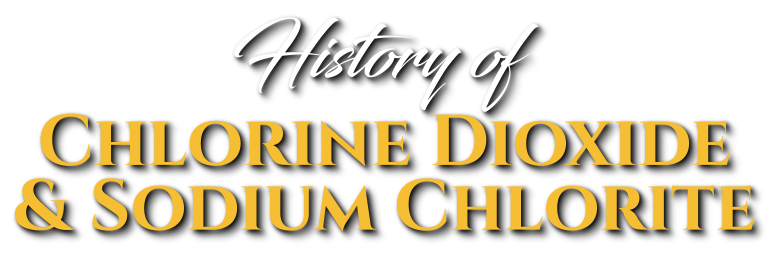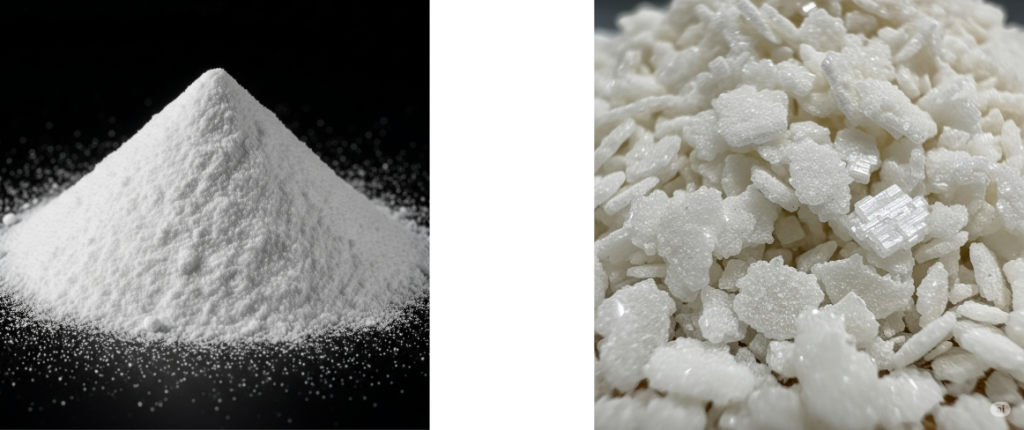
A Brief History of Chlorine Dioxide & Sodium Chlorite
Long before Jim Humble’s fateful expedition into the jungle, chlorine dioxide had already been making quiet waves in science and industry.
Chlorine dioxide (ClO₂) was first discovered in 1811 by Sir Humphry Davy, the same chemist known for isolating several elements. It was created by reacting potassium chlorate with hydrochloric acid, producing a yellow-green gas with strong oxidative properties.
By the 20th century, chlorine dioxide found industrial applications as:
- A disinfectant in municipal drinking water systems (especially in the U.S. and Europe)
- A bleaching agent in paper production (because it doesn’t form harmful chlorinated byproducts like chlorine gas)
- A sanitizer in food processing plants and medical settings
Sodium chlorite (NaClO₂), the precursor chemical used to generate chlorine dioxide on demand, is synthesized through a multi-step industrial process:
- Sodium chlorate (NaClO₂) is reduced to chlorine dioxide gas using a reducing agent (like sulfur dioxide).
- The ClO₂ gas is then absorbed into a sodium hydroxide solution to form sodium chlorite.
This compound is not mined — it’s entirely synthetic. It’s typically produced in chemical plants for use in:
- Water treatment
- Industrial bleaching
- Odor removal
- Pathogen disinfection
Jim Humble’s innovation wasn’t inventing chlorine dioxide, but repurposing it as an internal treatment for malaria and other illnesses — something that had never been seriously considered in mainstream medical circles.
Is Sodium Chlorite a Natural Salt?
Jim Humble once suggested to me that sodium chlorite is a “natural salt.” While that’s not technically true in the way we think of mineable minerals like sea salt or Epsom salt, there’s a grain of truth to the idea.
Sodium chlorite (NaClO₂) is a chemical salt — but one that does not occur naturally in the environment. You can’t mine it or harvest it from nature. It’s too reactive to remain stable in the wild.
Instead, it’s created in labs or chemical plants through a process that starts with natural saltwater (sodium chloride). Using electricity and controlled reactions, chemists:
- Convert saltwater into sodium chlorate (NaClO₂)
- Use that to generate chlorine dioxide (ClO₂)
- Then stabilize it into sodium chlorite
So while the elements come from nature — sodium, chlorine, and oxygen — the compound itself is synthetic, designed for specific industrial and purification purposes.
In short:
- The ingredients? Natural.
- The process? Industrial.
- The result? A man-made salt with powerful detoxifying properties — when used carefully.
Why Is Sodium Chlorite Sold in Flakes or Powder?
If you’ve ever bought sodium chlorite, you’ll notice it usually comes as white flakes or a fine crystalline powder. That’s not just a packaging choice—it’s about stability, storage, and shelf life.
Here’s why:
1. Stability
In its dry form, sodium chlorite is much more stable and has a long shelf life.
• When kept dry, it can last years without degrading.
• Once dissolved in water, it becomes more reactive and starts to break down slowly, especially when exposed to light, heat, or air.
2. Controlled Activation
The flake or powder form allows you to control when and how it’s activated.
• When you mix it with acid (like citric acid or HCl), it generates chlorine dioxide gas, the active compound used in MMS protocols.
• Keeping it dry ensures it won’t react until you’re ready to use it.
3. Easier Shipping and Storage
Dry flakes are:
• Lightweight
• Compact
• Non-pressurized (unlike chlorine dioxide gas, which can’t be bottled easily)
That makes them much safer and cheaper to transport than a pre-mixed liquid solution, which would degrade over time or require special storage.
⚠️ Reminder:
Sodium chlorite flakes should be stored in a cool, dark, and dry place—away from heat and moisture. Always keep it labeled and out of reach of children or pets.
Sodium Chlorite: Flakes vs. Powder
Both flakes and powder are the same chemical compound: sodium chlorite (NaClO₂). The difference is purely in the physical form, which is determined by how it’s dried and processed after production.
🔹 Flakes
• Flakes are formed when sodium chlorite is crystallized and dried slowly from a liquid solution.
• As the water evaporates, it forms thin crystalline layers, similar to salt flakes or fish food.
• These flakes are often preferred for:
◦ Longer shelf life
◦ Easier scooping without static cling
◦ Less dust in the air
How they’re made:
After neutralizing chlorine dioxide gas in sodium hydroxide, the resulting sodium chlorite solution is evaporated in shallow pans or trays. As the water slowly leaves, flat crystalline flakes naturally form and are then scraped or broken off.
🔹 Powder
• Powder is usually ground or milled flakes or smaller crystalline fragments.
• It has a finer consistency, like baking soda or flour.
• While chemically identical to flakes, the powder form:
◦ Can be harder to measure precisely without static or clumping
◦ Is more prone to absorbing moisture (hygroscopic)
◦ Creates more dust, which can irritate eyes or lungs if mishandled
Which One Should You Use?
• Flakes are generally easier to work with and preferred for home MMS kits because they’re cleaner, easier to store, and have a lower surface area (so they degrade more slowly).
• Powder might dissolve faster in water, but requires more careful handling and airtight storage.

